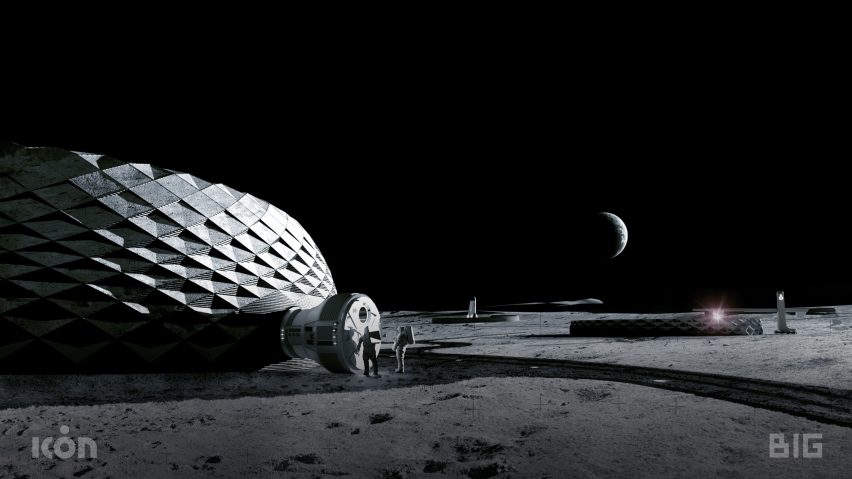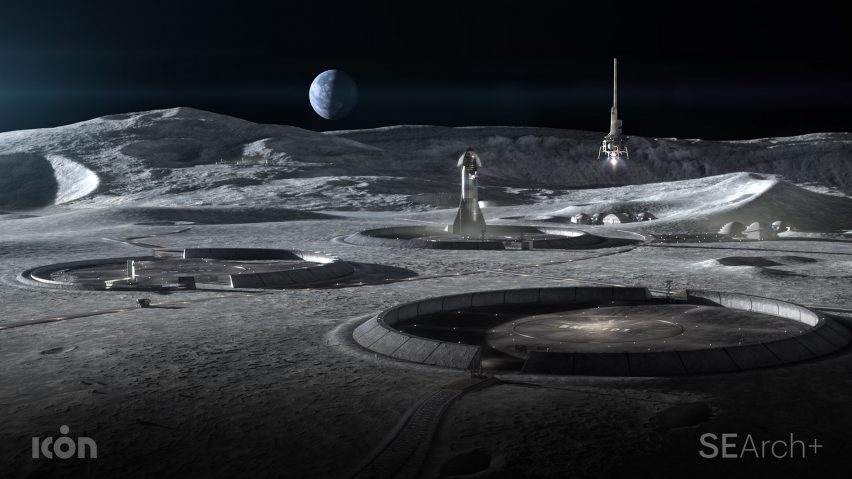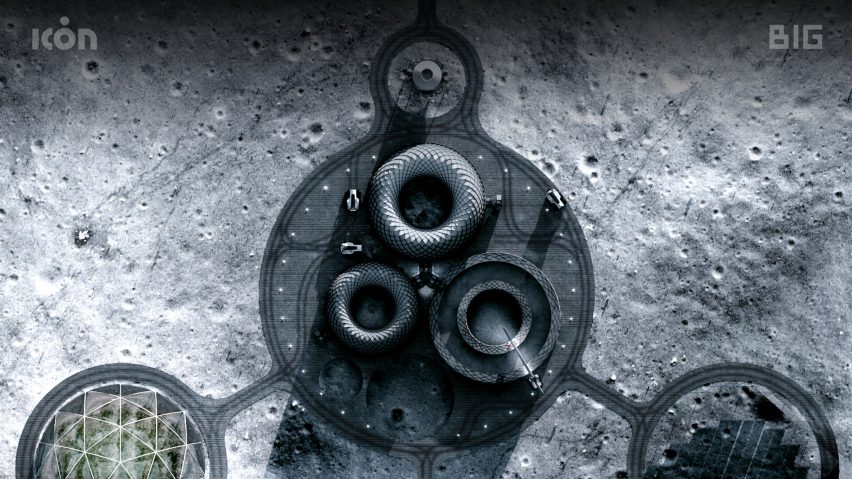
BIG and NASA collaborate to design 3D-printed buildings for the moon
BIG and 3D-printed building company ICON have revealed they are working on Project Olympus, which aims to develop robotic construction for the moon.
The architecture firm and SEArch+ (Space Exploration Architecture) were enlisted for the project by ICON after it received a Small Business Innovation Research (SBIR) government contract boosted with funding from NASA.
Called Project Olympus, it aims to develop a way to create a 3D-printed infrastructure for living on the moon using materials found on its surface.

"With ICON we are pioneering new frontiers – both materially, technologically and environmentally," said BIG founder Bjarke Ingels.
"To explain the power of architecture, 'formgiving' is the Danish word for design, which literally means to give form to that which has not yet been given form," Ingels added.
"This becomes fundamentally clear when we venture beyond Earth and begin to imagine how we are going to build and live on entirely new worlds."
Working with NASA's Marshall Space Flight Center in Huntsville, Alabama, the team will use a simulant of moon soil to investigate a 3D-printable construction.

While other projects have suggested inflatables or metal structures, Project Olympus is intended to create a robust construction suited to the environment on the moon. The team said that by using 3D-printing and local materials it will also be more sustainable and reduce waste.
"We have explored various building forms ideal for containing atmospheric pressure and optimised for protection from cosmic and solar radiation. "
"The habitat will be designed with the inherent redundancy required for extraterrestrial buildings, while also using groundbreaking robotic construction that uses only in-situ resources with zero waste left behind."
In time, Project Olympus could also offer a more sustainable example for building on earth, according to the team.
"3D printing with indigenous materials is a sustainable and versatile solution to off-world construction that will prove to be vital to our future here on Earth and in Outer Space," SEArch+ added.
"With the technologies and efficiency parameters developed for the construction of extraterrestrial buildings, Project Olympus will also help us to build sustainably on planet Earth as we strive to reduce the carbon footprint of the built environment," said BIG partner Martin Voelkle.

ICON received the government grant for off-Earth exploration after working to develop more sustainable construction using 3D-printing robotics, software and advanced materials. In 2018, it completed its first 3D-printed home in the US and has recently started construction on "the world's first 3D printed community of homes" in Mexico.
It selected BIG, which has previously designed a simulation of Mars called Mars Science City in Dubai, and SEArch+, for Project Olympus.
"Building humanity's first home on another world will be the most ambitious construction project in human history and will push science, engineering, technology, and architecture to literal new heights," said ICON Co-founder Jason Ballard.
The project forms part of NASA's commitment to exploring life on the moon, which includes the Artemis program to place the first woman and next man on the astronomical body in 2024. Earlier this year, NASA named Jeff Bezos's Blue Origin, Elon Musk's SpaceX and Alabama-based Dynetics as the three teams to develop vehicles for the planned landing.
The space agency also ran the 3D-printed Habitat Challenge, which tasked architects and designers to conceive 3D-printed homes for deep space.
A number of architecture firms are also exploring building on the moon.
Last year, SOM revealed it had teamed up with the European Space Agency (ESA) and Massachusetts Institute of Technology (MIT) to design the inflatable Moon Village as "the first permanent human settlement on the lunar surface".
In 2017, British firm Foster + Partners unveiled a proposal to 3D print buildings on the astronomical body. More recently, a collection of projects visualised life on the moon for the competition Moontopia.